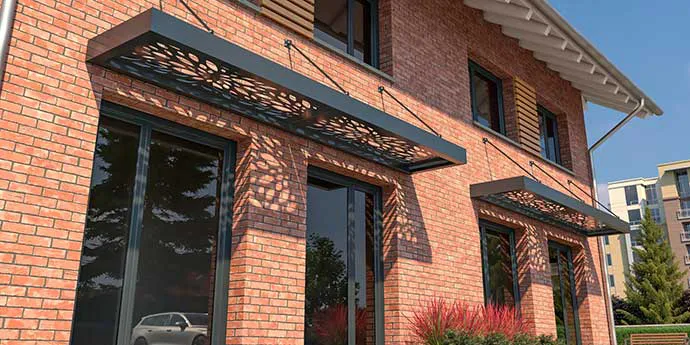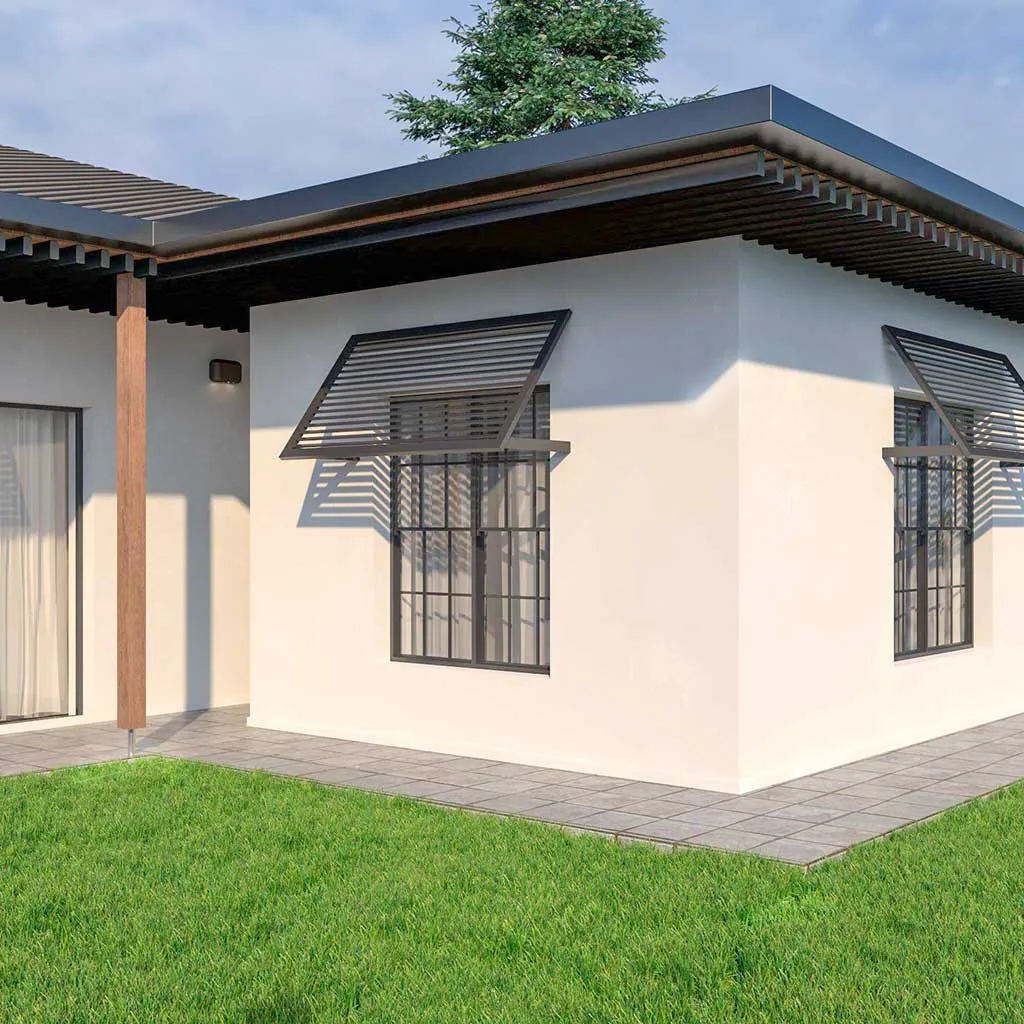 In contemporary architecture, the concept of functional aesthetics has become increasingly prevalent. This is particularly evident in the use of architectural screen panels for sunshades and canopies, a feature that is gaining momentum in both commercial and residential buildings. Architectural screen panels are an innovative approach to design, combining practicality with an artistic flair.
In contemporary architecture, the concept of functional aesthetics has become increasingly prevalent. This is particularly evident in the use of architectural screen panels for sunshades and canopies, a feature that is gaining momentum in both commercial and residential buildings. Architectural screen panels are an innovative approach to design, combining practicality with an artistic flair.
Architectural screen panels can be used to control the amount of sunlight that enters a building. They can be made from a variety of materials, including aluminum, steel or synthetic polymers, and can be customized to match the aesthetic of any building. The benefits of these screens range from improved energy efficiency to enhanced privacy, and this blog post aims to explore these advantages in more detail.
Energy Efficiency and Comfort
When discussing the benefits of architectural screen panels, the conversation naturally gravitates towards energy efficiency. Screens act as a barrier between the sun and the building, reducing the amount of heat that enters the structure. This shading coefficient, mitigates the greenhouse effect where heat gets trapped inside, leading to increased indoor temperatures.
By minimizing heat gain, architectural screens reduce the dependence on air conditioning systems, subsequently lowering energy usage. The U.S Department of Energy estimates that about 76% of sunlight that falls on standard double-pane windows enters to become heat, illustrating the significant potential for energy savings.
Moreover, these panels don’t just block heat; they also help maintain a comfortable interior environment. They reduce glare, diffuse bright sunlight and prevent rooms from becoming uncomfortably hot during the peak of summer. This not only enhances visual comfort but can also improve productivity in office settings.
This symbiotic relationship between energy efficiency and comfort is one of the key advantages of architectural screen panels.
Elevating Aesthetics
In addition to their practical benefits, architectural screen panels also elevate the aesthetic appeal of buildings.
Architectural screen panels add a layer of depth to a building’s facade. Instead of a flat, two-dimensional appearance, these panels create a three-dimensional effect that enhances the building’s visual interest. This layered look can add to the building’s design, making it more visually appealing.
One of the most dramatic aesthetic effects is the interplay of light and shadow. During the day, panels cast varying patterns of shadow on the building, creating an ever-changing visual display. This play of light and shadow can turn a building facade into a living, breathing art piece. A well thought out design can follow the lines and curves of the building, enhancing its architectural features instead of hiding them. This integration creates a unified look that elevates the overall aesthetic of the building.
Privacy and Security
One major advantage of architectural screen panels is their ability to strike a balance between openness and privacy. Natural light filters into the building and maintains a visual connection with the outside environment, all while ensuring privacy and security. This balance contributes to creating more comfortable, safer spaces for occupants, proving that functional and aesthetic considerations can indeed go hand in hand.
Beyond privacy, architectural screen panels also contribute to a building’s security. First, by obscuring the view into the building, they can deter potential intruders. When the interior of a home or office is not easily visible, it becomes less of a target.
The solid structure of the panels makes it difficult for outsiders to see inside, making it less likely for a building to be targeted by burglars. Thus, architectural screen panels subtly improve privacy and security, enhancing the comfort and peace of mind of building occupants.

Sustainability and a Greener Future
In an era of changing environmental challenges, Architectural screen panels are an example of how contemporary design can contribute to a greener future.
Most screen panels are made from recycled or recyclable materials, further enhancing their eco-friendliness. They are durable and require minimal maintenance, giving them a long lifespan and a reduced environmental footprint, making architectural screen panels a sustainable choice for modern buildings.
As discussed, architectural screen panels contribute to energy efficiency by blocking a large portion of the sun’s heat, reducing the need for air conditioning. In colder climates, the screens can provide an extra layer of insulation, helping to retain heat inside the building. This dual functionality makes them a year-round solution for reducing energy consumption and promoting sustainability.
Screen panels made from aluminum, are durable, recyclable, and require minimal maintenance. This contributes to their long lifespan and reduces the need for replacement. While their production may involve non-renewable resources, their longevity and energy-saving properties can offset these impacts over the screens’ lifetime.
Daylighting, the use of natural light to illuminate building interiors, is a key strategy in sustainable architecture. By allowing diffused sunlight into the building, architectural screen panels can reduce the need for artificial lighting during the day, enhancing productivity and wellbeing for building occupants while further reducing energy consumption.
That’s a Wrap
Using architectural screen panels for sunshades and canopies is an approach that combines aesthetics, functionality, and sustainability. They offer numerous benefits, from energy efficiency and enhanced comfort to improved privacy and security. Additionally, their ability to transform the exterior lines of buildings demonstrates how they contribute to the evolution of architectural design.
It’s clear that architectural screen panels will continue to play a significant role in shaping the future of our built environment. They represent a paradigm shift in architecture, where design is no longer solely about aesthetics or functionality but a harmonious blend of both.
Whether you’re an architect, a building owner, or simply someone interested in modern design, it’s worth considering the benefits of architectural screen panels. They offer a unique solution that balances aesthetics and functionality while also contributing to a more sustainable world.